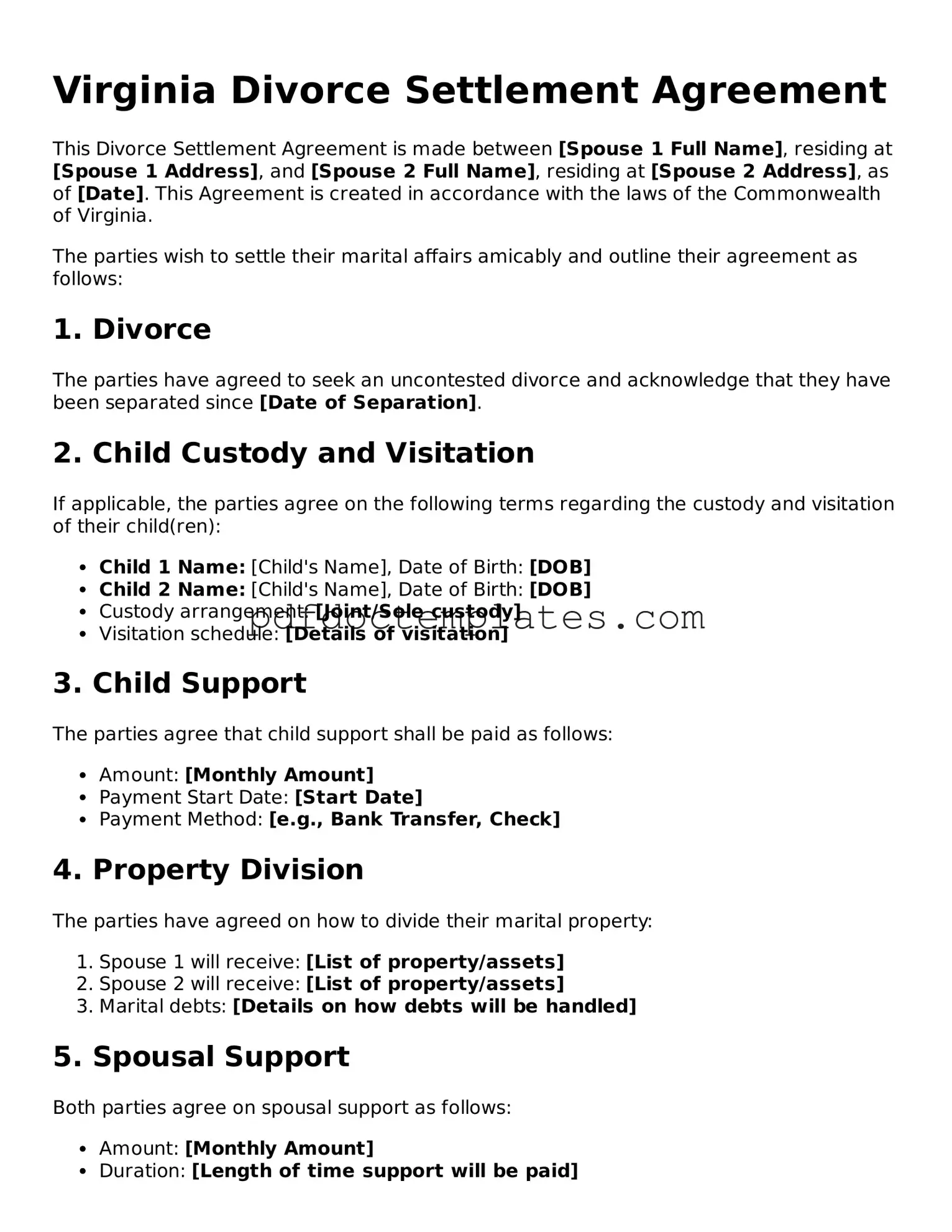Virginia Divorce Settlement Agreement
This Divorce Settlement Agreement is made between [Spouse 1 Full Name], residing at [Spouse 1 Address], and [Spouse 2 Full Name], residing at [Spouse 2 Address], as of [Date]. This Agreement is created in accordance with the laws of the Commonwealth of Virginia.
The parties wish to settle their marital affairs amicably and outline their agreement as follows:
1. Divorce
The parties have agreed to seek an uncontested divorce and acknowledge that they have been separated since [Date of Separation].
2. Child Custody and Visitation
If applicable, the parties agree on the following terms regarding the custody and visitation of their child(ren):
- Child 1 Name: [Child's Name], Date of Birth: [DOB]
- Child 2 Name: [Child's Name], Date of Birth: [DOB]
- Custody arrangement: [Joint/Sole custody]
- Visitation schedule: [Details of visitation]
3. Child Support
The parties agree that child support shall be paid as follows:
- Amount: [Monthly Amount]
- Payment Start Date: [Start Date]
- Payment Method: [e.g., Bank Transfer, Check]
4. Property Division
The parties have agreed on how to divide their marital property:
- Spouse 1 will receive: [List of property/assets]
- Spouse 2 will receive: [List of property/assets]
- Marital debts: [Details on how debts will be handled]
5. Spousal Support
Both parties agree on spousal support as follows:
- Amount: [Monthly Amount]
- Duration: [Length of time support will be paid]
- Start Date: [Start Date]
6. Final Agreement
This Agreement represents the complete understanding of both parties. Any modifications to this Agreement must be in writing and signed by both parties.
IN WITNESS WHEREOF, the parties have executed this Divorce Settlement Agreement on [Date].
__________________________ [Spouse 1 Signature]
__________________________ [Spouse 2 Signature]
